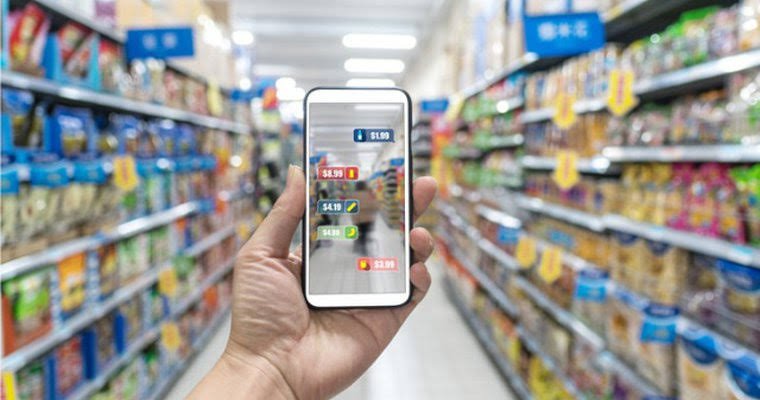In today’s fast-paced retail landscape, supermarkets are continually seeking innovative ways to enhance their sales strategies and connect with customers. The rise of e-commerce and digital marketing has led to a shift in how consumers shop, making it imperative for brick-and-mortar stores to adopt modern in-store marketing solutions. This article explores effective methods for utilizing these solutions to drive supermarket sales while incorporating digitally-focused outdoor branding strategies.
Supermarkets have been a cornerstone of retail for decades, but the advent of digital technology has brought about significant changes in consumer behavior. As a result, modern supermarkets need to adopt creative and tech-driven solutions to stay competitive in the market. This article delves into the supermarket sales strategies that can be employed to leverage in-store marketing solutions and embrace digitally-focused outdoor branding tactics to boost supermarket sales.
Understanding the Changing Retail Landscape
The retail landscape has shifted dramatically due to the influence of online shopping. However, physical stores still offer unique advantages, such as the ability to provide an immersive shopping experience. In-store marketing solutions aim to bridge the gap between online and offline retail, creating a seamless journey for shoppers.
Importance of In-Store Marketing Solutions
In-store marketing solutions encompass a range of strategies that enhance the shopping experience. From interactive product displays to personalized offers, these solutions engage shoppers on a deeper level, increasing the likelihood of purchase.
Utilizing Technology for Enhanced Customer Experience
Interactive Product Displays
Incorporating interactive displays allows customers to engage directly with products. Touchscreens provide product information, reviews, and usage tips, empowering shoppers to make informed decisions.
Augmented Reality (AR) Navigation
AR navigation simplifies the shopping experience by guiding customers to their desired products. By using their smartphones, shoppers can follow AR markers that lead them through the store efficiently.
Personalization: Tailoring Offers to Individual Shoppers
Personalized offers based on purchase history and preferences create a more personalized shopping experience. Utilizing data analytics, supermarkets can send tailored promotions to customers, increasing the likelihood of conversions.
Creating an Immersive Shopping Environment
Aisles with Digital Screens
Digital signs placed strategically in aisles can showcase promotions, recipe ideas, and product features. This captures shoppers’ attention and encourages them to explore new items.
In-Store Audio Experience
Music and announcements contribute to the ambiance of the store. Using carefully selected audio, supermarkets can create a pleasant atmosphere that keeps shoppers engaged.
Harnessing Data Analytics for Insights
Tracking Customer Movement
Utilizing sensors and analytics tools, supermarkets can track how customers move throughout the store. This data helps optimize store layouts and product placements.
Analyzing Purchase Patterns
By analyzing purchase data, supermarkets gain insights into which products are popular and which might need additional marketing efforts. This information aids in inventory management and promotional strategies.
The Power of Digitally-Focused Outdoor Branding
Dynamic Outdoor Signage
Digitally-focused outdoor branding employs dynamic signage that can be updated in real-time. This allows supermarkets to promote current offers and events effectively.
Geo-Targeted Mobile Ads
Supermarkets can leverage location-based advertising to reach potential customers in their vicinity. Geo-targeted mobile ads offer promotions and directions to nearby stores.
Seamless Integration of Online and Offline Strategies
Creating a unified shopping experience involves integrating online and offline strategies. Supermarkets can offer online ordering with in-store pickup, providing convenience to shoppers.
Enhancing Employee-Customer Interaction
Well-trained staff members contribute to positive shopping experiences. Employees can provide recommendations, assist with questions, and ensure customers have a smooth visit.
Ensuring Data Privacy and Security
As supermarkets collect customer data, maintaining data privacy and security is paramount. Implementing robust cybersecurity measures and obtaining customer consent are essential.
Measuring ROI and Effectiveness
To assess the success of in-store marketing solutions, supermarkets should track key performance indicators (KPIs). These metrics include sales uplift, customer engagement, and conversion rates.
Adapting to Evolving Trends in Supermarket Retail
Supermarkets must remain adaptable to changing trends. Regularly updating in-store marketing strategies and staying attuned to customer preferences will ensure continued success.
Conclusion
In a rapidly evolving retail landscape, embracing modern in-store marketing solutions and digitally-focused outdoor branding is crucial for supermarkets. By enhancing the shopping experience, personalizing offers, and harnessing data-driven insights, supermarkets can drive sales and remain competitive. Remember, the key is to create a seamless and immersive journey for shoppers, combining the best of online and offline strategies.
